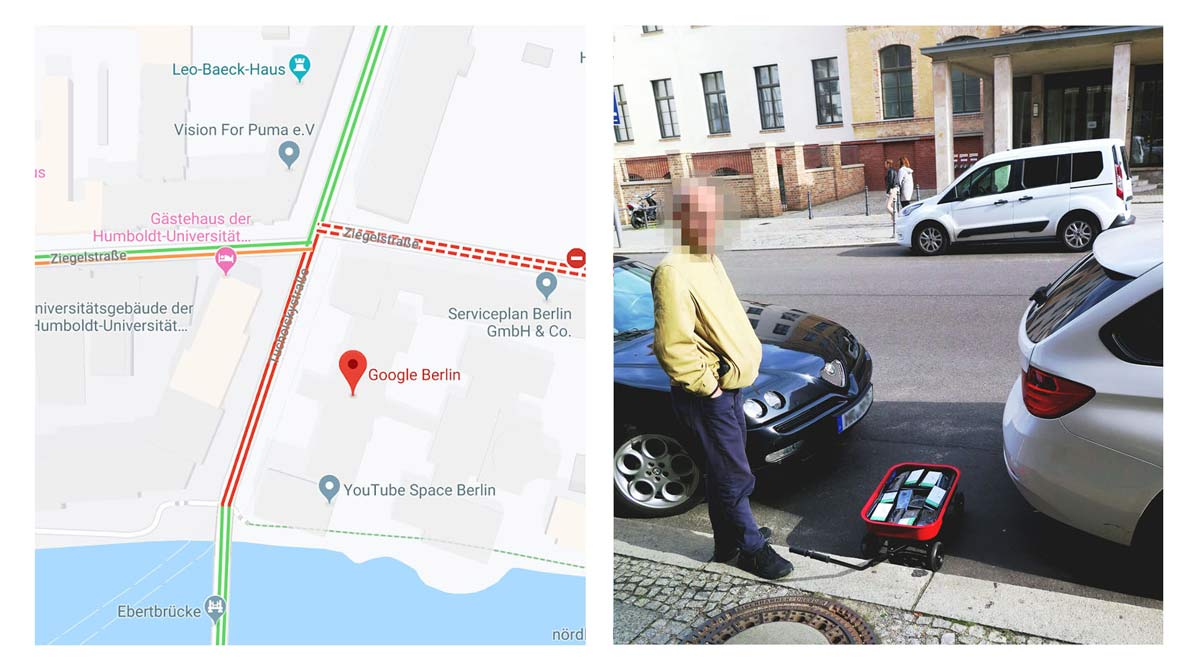Google has Google Maps that is literally installed on almost every single smartphone on the planet. It changed GPS navigation forever by making the world's map accessible to everyone, and most importantly, helps provide traffic reports in almost real-time.
But an artist named Simon Weckert, managed to trick Google Maps into reporting non-existent traffic jams by wheeling around the streets of Berlin, Germany, with 99 mobile phones and a cart.
This way, wherever Weckert went, Google Maps would a red line at the road where he was at.
Weckert experimented with this method in the summer of 2019, but only revealed the results this week for Google Maps’ 15th birthday.

His idea came around three years prior.
At that time, he saw something unusual at a May Day demonstration in Berlin: Google Maps showed that there was a massive traffic jam, even though he saw literally zero cars on the street.
Weckert realized that it was the huge crowd of people, or more specifically their smartphones the people had with them, that had inadvertently fooled Google Maps into thinking that there was massive traffic jam on an empty street.
With that knowledge, Weckert decided to try it out for himself.
Weckert said that:
So Weckert contacted his friends and reached rental companies, until he got his hands on 99 smartphones.
He pilled all those phones onto a red cart, and then walked up and down a given street, mostly at random, towing his smartphone-packed cart with him. It took about an hour before Google Maps showed a red line on the street he was at, indicating that traffic had slowed to a crawl - even though there wasn’t any traffic at all.
Weckert effectively tricked fooled Google Maps.
Responding to Weckert, Google said:
"We appreciate seeing creative uses of Google Maps like this as it helps us make maps work better over time."
Google noted that it has figured out a way to distinguish between cars and motorcycles in a few countries, but "we haven’t quite cracked traveling by wagon."
Weckert wasn't the first person to trick Google Maps, and there are other ways to recreate a similar thing without having to walk up and down the streets with a cart full of smartphones. But it was Weckert's simplicity that made this method clearly novel.
When Weckert published the project to a web page on his website nearly a month ago, it didn't see much attention. But when he posted his method on Twitter for the first time, the tweet quickly garnered more than 10,000 retweets. Within a matter of hours, Weckert's Google Maps Hack made the news.